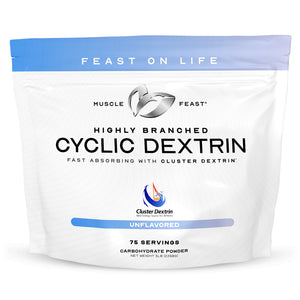Over the past half decade, research on periodization has evolved from comparing models to understanding the deeper principle that makes all of them effective structured variation over time. The central question is no longer which model is best, but why organization itself drives adaptation. Across contemporary literature, four cornerstone works Evans (2019), Stone et al. (2021), Anousaki et al. (2021), and Peixoto et al. (2022) together form a unified perspective on how deliberate sequencing of training variables shapes strength, power, and muscle development.
These studies collectively demonstrate that progress in resistance training depends less on the name of a system and more on how intelligently stress and recovery are managed across weeks and months. They confirm that periodization, in all its modern forms, remains the most reliable framework for sustaining long-term performance gains in both athletes and experienced recreational lifters.
1. Conceptual Foundations
Stone et al. (2021) reframed periodization as a management system rather than a rigid calendar. Their narrative emphasized that periodization is not a fixed formula, but a strategic framework that organizes training variables volume, intensity, and specificity over time to manage stress and recovery. Rather than simply progressing linearly, effective periodization adapts dynamically to the athlete’s response and environment, ensuring that training stress is applied and withdrawn in a rhythm that promotes continual adaptation.
Their work clarified that both traditional and block periodization follow the same underlying biological logic: organized cycles of accumulation, transmutation, and realization. In the accumulation phase, athletes build general fitness and strength foundations through higher volume and moderate intensity. During transmutation, those general qualities are converted into more sport-specific power and performance capacity. Finally, the realization phase focuses on tapering and peaking reducing fatigue while expressing the accumulated adaptations as maximal output.
This cyclical process reflects a physiological truth that adaptation depends on the alternation of stress and recovery. Stone and colleagues argued that when training lacks this structure, progress becomes erratic or plateaus quickly. Periodization, therefore, serves as the blueprint that links biological adaptation with intentional design, giving athletes and coaches a predictable, evidence-based way to manage long-term performance.
| Traditional periodization typically involves a gradual, sequential reduction in training volume alongside a progressive increase in intensity over time. It is best suited for athletes with predictable competitive seasons or individuals developing general fitness capacities. |
| Block periodization, in contrast, divides training into concentrated blocks that each target a specific performance quality such as strength, power, or endurance before moving to the next. This allows athletes to focus on a limited number of compatible qualities at a time while maintaining previously developed ones through residual effects. |
Stone’s paper emphasized that adaptation is cyclic and that fatigue, specificity, and recovery must be deliberately sequenced. This conceptual framework provides the rationale for structured programming: without organization, the body adapts haphazardly, leading to stagnation or overtraining.
| Traditional periodization generally produces steady, predictable improvements in strength and conditioning by gradually increasing intensity and reducing volume over time. It works well for developing foundational strength and preparing athletes for single peak performances, such as in seasonal or competition-based sports. However, because it trains multiple qualities simultaneously like strength, endurance, and power it can lead to overlapping fatigue and slower progression in advanced athletes. |
| Block periodization, by contrast, concentrates training stress on one or two specific performance qualities at a time. This focused approach allows greater adaptation within each block before transitioning to the next phase. Research summarized by Stone and colleagues shows that block models typically result in faster strength and power gains in well-trained athletes, better fatigue management, and more distinct performance peaks across a season. Traditional models, on the other hand, tend to build a broader base of fitness and are more effective for early-stage or recreational lifters who benefit from gradual, multi-quality development. |
In short, traditional periodization builds general preparedness through broad progression, while block periodization optimizes specificity and recovery for advanced adaptation. Both are effective, but each serves a different point along the athlete’s development curve.
2. Long-Term Empirical Validation
Anousaki et al. (2021) provided one of the few long-term, high-quality data sets on periodization by tracking national-level throwers across 25-week macrocycle. The study was divided into three phases: hypertrophy and maximum strength (weeks 1–12), maximum strength and power (weeks 13–22), and power and speed (weeks 23–25).
Participants completed weightlifting movements such as the snatch, clean, and squat, combined with throwing drills and plyometrics. The results demonstrated consistent, measurable improvements in both strength and performance metrics: snatch and squat one-repetition maximums increased by about 10 percent, and throwing distance improved by nearly 11 percent. Fascicle length in the vastus lateralis muscle increased by 9.6 percent, suggesting structural adaptations that support faster contraction velocity.
The conclusions were clear: a progressive, periodized approach over several months enhances strength, power, and muscle architecture without overtraining, confirming that planned sequencing remains effective even in already-trained athletes.
3. Comparative Evidence
Evans (2019) conducted an extensive review of over two decades of research comparing periodized and non-periodized resistance training. His analysis demonstrated periodized training consistently outperforms non-periodized programs for developing strength across all populations, including both novice and experienced lifters.
The advantage for strength arises from the systematic variation of load and intensity that periodization provides. Structured programs rotate between phases of higher and lower stress, giving the neuromuscular system time to recover and adapt before another progression in workload. This cyclical manipulation of training variables prevents stagnation and allows athletes to maintain long-term progress. In contrast, non-periodized programs often apply the same stimulus repeatedly, leading to early gains that plateau once the body adapts.
When examining muscle hypertrophy, Evans found the evidence to be less definitive. Once total training volume was equated, both periodized and non-periodized programs produced similar increases in muscle size. This finding suggests that hypertrophy is primarily a function of total mechanical work performed over time, while strength development is more sensitive to how that work is distributed, sequenced, and recovered from within the training cycle.
Overall, Evans review supports the principle that structure, not novelty, is the key determinant of sustainable strength gains. Periodization ensures that overload, recovery, and progression remain in balance, enabling the lifter to continue adapting beyond the short-term improvements typically seen in unstructured training.
4. Applied Innovation
Peixoto et al. (2022) introduced an updated model of daily undulating periodization known muscle daily undulating periodization (mDUP). Traditional daily undulating periodization (DUP) varies repetition ranges and intensity between sessions for example, alternating heavy, moderate, and light days within the same week. This model has been widely used to stimulate continuous adaptation and minimize training plateaus by changing the stimulus frequently.
mDUP takes that concept further by applying undulation within specific muscle groups rather than entire sessions. Instead of each workout being labeled as a “heavy” or “light” day for the whole body, individual muscle groups are assigned distinct loading patterns across the week. For instance, an athlete might perform chest exercises with heavier loads and lower repetitions early in the week, train back muscles with moderate intensity midweek, and finish the week with higher-repetition, lower-load leg training. This arrangement gives each muscle its own recovery rhythm while keeping overall workload balanced.
The study by Peixoto and colleagues followed 37 trained men over 12 weeks, comparing a traditional DUP group with an mDUP group. Both groups completed four sessions per week that included compound and isolation lifts for the upper and lower body. Strength was tested through bench press, leg press, lat pull-down, and arm curl one-repetition maximums, while body composition and muscular endurance were also measured.
By the end of the program, both groups achieved comparable improvements in strength, muscular endurance, and body composition. The mDUP group showed a small advantage in mid-program arm-curl endurance, but overall results indicated that both systems were equally effective. The findings highlight that the consistent application of variation and progressive overload rather than the exact scheduling pattern is the main driver of adaptation.
Peixoto’s model reinforces the broader conclusions of Evans (2019) and Stone et al. (2021): the success of periodization lies in its ability to integrate structured variability, manage fatigue, and sustain progress over time. The specific format linear, block, undulating, or mDUP is simply a different expression of the same underlying principle of planned, intelligent progression.
5. Current Consensus
Recent research continues to reinforce the same core findings summarized by Evans (2019), Stone et al. (2021), Anousaki et al. (2021), and Peixoto et al. (2022).
|
Periodized training remains superior to non-periodized training for strength.
Across multiple controlled studies and reviews, structured variation has repeatedly shown better strength outcomes than programs that maintain constant loads or rep ranges. Periodization’s advantage comes from its ability to balance overload with recovery, allowing the nervous system and musculature to adapt across successive cycles instead of plateauing early. |
|
Hypertrophy outcomes are comparable once total workload is equal.
When overall training volume and mechanical tension are matched, both periodized and non-periodized programs produce similar increases in muscle size. Periodization contributes indirectly by maintaining consistency and recovery patterns that support long-term muscle growth. |
|
Model choice matters less than management of load and progression.
Linear, undulating, and block approaches all manipulate the same underlying principles variation, overload, and recovery. The specific sequencing is less important than consistent application and adequate rest between periods of high intensity. |
|
Experimental limitations remain significant.
Most randomized trials last fewer than sixteen weeks and rely on small, mostly untrained samples. The clearest demonstrations of sustained adaptation still come from long-term field studies such as Anousaki et al. (2021), which tracked trained athletes over twenty-five weeks and documented improvements in strength, power, and muscle architecture. |
6. Practical Takeaway
Taken together, these papers form a unified message: structure drives progress. The specific terminology traditional, linear, undulating, or block is less important than maintaining organized variation and recovery balance.
Model details:
- Traditional periodization gradually transitions from high-volume, lower-intensity work to low-volume, high-intensity work across weeks or months.
- Undulating periodization rotates intensity and rep ranges more frequently (daily or weekly), preventing stagnation.
- Block periodization uses focused blocks that target one or two performance qualities at a time, allowing for concentrated overload.
At the microcycle level, all models share common elements:
- Load rotation (alternating heavy, moderate, and light sessions),
- Recovery sequencing (planned rest or deload weeks),
- Exercise variation (cycling between strength, hypertrophy, and skill emphasis).
For coaches and recreational lifters, the practical lesson is to maintain structured variety, plan recovery intentionally, and use periodization as a flexible framework that adapts to one’s life, season, and readiness.
- Conrad RN
References
Evans JW (2019). Periodized resistance training for enhancing skeletal muscle hypertrophy and strength: A mini-review. Front Physiol, 10, 13. https://doi.org/10.3389/fphys.2019.00013
Stone MH et al. (2021). Periodization and block periodization in sports: Emphasis on strength-power training: A provocative and challenging narrative. J Strength Cond Res, 35(8), 2351–2371. https://doi.org/10.1519/JSC.0000000000004124
Anousaki E et al. (2021). Effects of a 25-week periodized training macrocycle on muscle strength, power, muscle architecture, and performance in well-trained track and field throwers. J Strength Cond Res, 35(10), 2728–2736. https://doi.org/10.1519/JSC.0000000000004022
Peixoto DL et al. (2022). Muscle daily undulating periodization for strength and body composition: The proposal of a new model. Int J Exercise Science, 15(4), 206–220.


